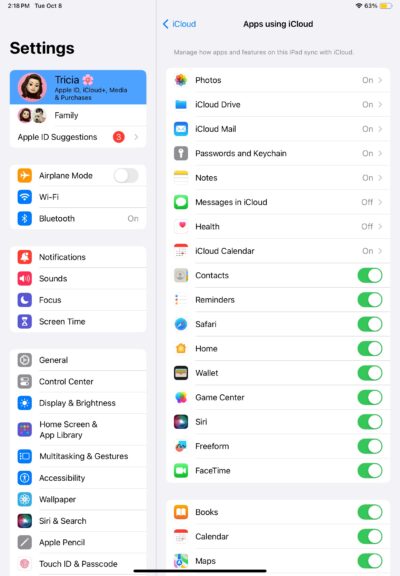The Files app makes it easy to sync your documents, PDFs, and work files across all your Apple devices. It gives you easy offline access to your data. The platform is reliable for the most part, so you might feel lost and confused when files suddenly go missing. Speaking from experience, sifting through hundreds of folders is an inefficient approach that rarely yields results.
Instead of hastily diving into your storage system, pinpoint the reason for this glitch. Did iCloud fail to sync? Or were you looking in the wrong locations? Here’s everything you should know for a fast, effective troubleshooting process.
Why Do Files Disappear on iPad?
There are several potential causes, from poor network connectivity to misconfigured iCloud account settings. It’s best to narrow down issues before troubleshooting. Otherwise, you’ll waste time trying different solutions across folders.
iCloud Sync Issues
iCloud needs a stable internet connection to sync your devices. Files synced with spotty connectivity might appear missing on some of your devices. For example, if your iPhone briefly loses connection mid-sync with your iPad, larger media assets won’t make it through properly.
 NOTE
NOTE
File Location Changes
It’s easy to misplace files with multiple cloud storage options available (e.g., iCloud, Google Drive, Dropbox). Take Dropbox as an example. You’ll only find saved data in the Dropbox folder, and they might not appear elsewhere.
 NOTE
NOTE
Incorrect File View
The Files app filters out specific assets by default. The Favorites, Recents, and Downloads folders tend to overshadow older data. In these cases, consider browsing the native and third-party apps in the On My iPad section.
Corrupted Files
Files could become corrupt due to improper transfers or incomplete downloads. Unfortunately, there are few safe, effective ways to recover infected data. Even if you could, retaining them merely puts your device at risk.
How To Find Files That Disappeared on iPad
If you haven’t already, use the search function. Look up the name of the asset you’re looking for on your iPad, although this tip won’t work for data with default filenames (e.g., image001.jpg). Otherwise, proceed with the following:
1. Check iCloud Sync Settings
Time needed: 2 minutes
See if iCloud Sync is disabled for specific apps. This might be the case if you can’t access multiple assets of the same file type. Follow these steps:
- Go to Settings > [Your Apple ID Profile] > iCloud.
- Tap See All in the Saved to iCloud section.
- Toggle on the sync button for the app that’s having trouble uploading files to iCloud. If it’s already on, turn it off and on again.
2. Update iCloud Payments
Apple will automatically downgrade your iCloud+ account and stop syncing once your payments lapse. Your data will still be available locally. However, you can’t sync them across the ecosystem until you settle your lapsed dues.
- Go to Settings > [Your Apple ID Profile] > Payment and Shipping.
- Check your Payment Methods section.
- If your preferred methods already failed, tap Add Payment Method.
3. Check Storage Space
Your iPad might have stopped syncing because it ran out of space. Check both your local and cloud storage systems. If either option is maxed out, you can either free up space by unnecessary data or upgrade your iCloud+ plan.
- Open Settings > General > iPad Storage.
- Go to Settings > [Your Apple ID Profile] > iCloud.
4. Factory Reset iPad
As a last resort, factory reset your iPad. It’s a drastic way to revert corrupt data, misconfigured settings, and third-party apps interfering with your Files app. Just make sure to back up your iPad. Otherwise, you’ll permanently lose whatever assets you couldn’t find.
- Open Settings > General.
- Scroll down to Transfer or Reset iPad.
- Tap Erase All Content and Settings, then follow the on-screen instructions.
Reach out to Apple Support should issues persist. They can’t access your local or iCloud storage system, but they can help you navigate them more effectively.






